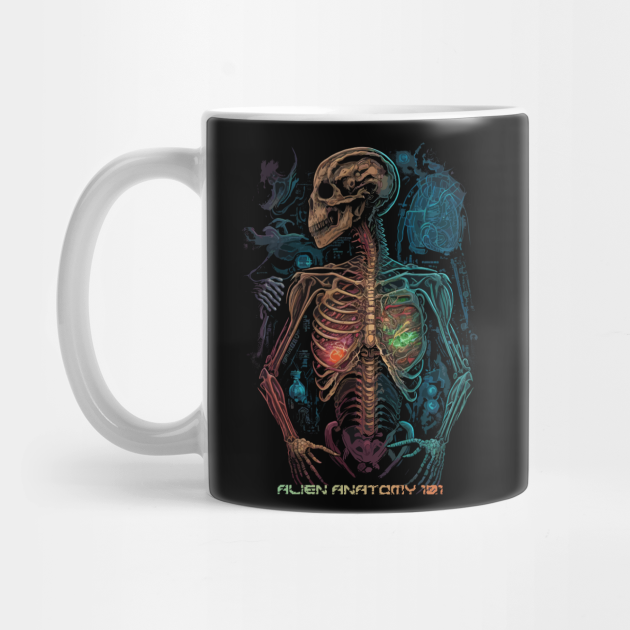Human anatomy and physiology is the study of the structure and function of the human body. It is a crucial component of medical education and research.
Understanding how the human body works is essential to maintaining good health and treating medical conditions. Human anatomy and physiology is a complex and fascinating field of study that breaks down the different systems and organs of the body, from the nervous system to the cardiovascular system.
The study of human anatomy helps us understand how the body is structured and how different parts function together to enable us to perform various activities. On the other hand, the study of human physiology focuses on how different systems and organs work to sustain life. It is a dynamic and ever-evolving field that continues to yield new insights and discoveries into the workings of the human body.

Credit: www.ebay.com
Understanding The Complexities Of The Human Body
Understanding the complexities of the human body is an important part of our lives. An overview of anatomy and physiology can introduce us to the functions and structures of the body. Studying anatomy and physiology is an essential aspect of healthcare and education.
Anatomy refers to the structure of the body, while physiology focuses on the functions of individual organs and cells. The intricacies of these concepts highlight the importance of constant research and learning. Whether you’re a healthcare provider or simply curious, building an understanding of human anatomy and physiology can help deepen your appreciation for the amazing complexity of our bodies and how they work.
The Building Blocks Of The Human Body
The human body is composed of cells, tissues, and organs which all play a vital role in human anatomy and physiology. Each cell type performs a specific function in the body that is essential to maintain normal bodily functions. The different types of tissues work together to form organs, such as the heart, lungs, and brain, among others.
These organs have specific functions such as pumping blood, exchanging gases, and controlling body movements. Understanding the building blocks of the human body can help us appreciate the complexity of the human anatomy and physiology. The study of the human body is crucial for various disciplines, including medicine, biology, and nursing, among others.
Therefore, studying and understanding the basic concepts of human anatomy and physiology is essential in providing optimal care and achieving better health outcomes.
Delving Deep Into The Systems Of The Body
The human body is an intricate machine consisting of several interconnected systems. The skeletal system provides structure and support for the body, with bones, joints, and cartilage playing key roles. Muscular system comprises voluntary and involuntary muscles, enabling movement and maintaining vital functions.
The nervous system controls and communicates with the rest of the body, including the brain, spinal cord, and nerves. In the respiratory system, lungs and breathing facilitate the exchange of oxygen and carbon dioxide. The circulatory system involves the heart, blood vessels, and blood to transport oxygen, nutrients, and waste throughout the body.
The digestive system breaks down food, with the mouth, stomach, and intestines playing critical roles. Hormones and glands make up the endocrine system. The excretory system manages waste disposal, with kidneys playing a crucial role. Finally, the reproductive system consists of male and female anatomy.
The Intricacies Of How The Body Works
The intricacies of human anatomy and physiology are fascinating. The body’s ability to maintain internal balance, known as homeostasis, is vital. Stress and anxiety elicit complex physiological reactions in the body. The process of muscle contraction and relaxation is equally as intricate.
Pain perception and response are still mysteries to the scientific community. Finally, the physiology of the five senses provides insight into the way we perceive the world. From homeostasis to sense perception, human anatomy and physiology are endlessly intriguing and complex.
Frequently Asked Questions Of Human Anatomy And Physiology
What Is Human Anatomy?
Anatomy is the study of the structure of living organisms. Human anatomy deals specifically with the scientific study of the structure of the human body, including the organs and tissues.
What Are The Main Body Systems?
The body’s systems include the respiratory, circulatory, nervous, digestive, reproductive, endocrine, lymphatic, muscular, skeletal, and excretory systems. All these systems work together to keep the body functioning properly.
How Does The Body Maintain Homeostasis?
Homeostasis is the body’s ability to maintain a relatively stable internal environment. This process is achieved through the coordinated actions of our body systems, which rapidly monitor and adjust to changes to keep our body in balance.
What Is The Difference Between Anatomy And Physiology?
Anatomy is the study of the structure of living organisms, while physiology is the study of how these structures function and work together as a whole. Understanding anatomy and physiology together is essential to understanding how the human body works.
Why Is It Important To Study Human Anatomy And Physiology?
Studying human anatomy and physiology is essential for healthcare professionals, as it enables them to understand the intricacies of the human body and how it functions. This knowledge is crucial for diagnosing and treating a wide range of medical conditions.
Conclusion
As we wrap up our exploration of human anatomy and physiology, it is clear that these two interconnected fields are vital to our understanding of the human body. From the various systems that keep us alive and functioning, to the complex structure of cells and tissues, every aspect is fascinating.
Studying anatomy and physiology not only gives us a deeper understanding of how our bodies work, but also allows us to make informed decisions about our health and wellbeing. Additionally, it can pave the way for a variety of careers in the medical field.
Although it can seem overwhelming at first, with dedication and effort, anyone can grasp the fundamental concepts of anatomy and physiology. As we continue to learn and make discoveries, our understanding of what makes us human will continue to expand, fueling advancements in medicine and beyond.

